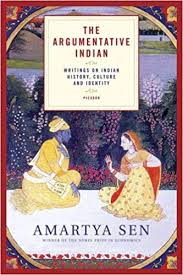A commenter below who probably scores OK on an IQ test left a note which is worth responding to.
First, “If this was a Christian or Muslim emigrant to US who wanted to marry within religion.” In the original post I focused on marrying within subcaste for a reason. It’s generally socially acceptable to marry within religion for ideological reasons in American society. I’m not talking about within-religion marriage because that’s considerably more exogamous than what Ravi Patel was talking about. So the whole thrust of this element of the response either consciously misreads (malicious) what I’m saying, or, does not read in the first place (stupid).
Also, this is Brown Pundits. I think a tendency for Hasidic Jewish sects to in-marry is not optimal for individuals or society…but this is not a blog focused on Judaism.
Next, “Two, you link jati affiliation to hindu-muslim violence.” No I don’t. Please note that I don’t like it when readers engage in “close reading.” Because that’s usually an excuse to impute. I do think that a certain sort of jati-based endogamy is part of a cultural context where communal violence has also emerged. Left-wing Indian American commenters bring up these connections, often obnoxiously in my opinion. But this film was aimed at non-South Asians. So I just wanted to bring up what the obnoxious Indian Lefty would bring up just so that the contrast between Ravi’s liberal West LA lifestyle with a very regressive set of values even in the modern Indian middle class milieu would be more stark (it actually makes the documentary more powerful).
Finally:
Finally, on Nicholas Dirks, he like others notices the standard story of jatis classifying into 4 varnas is not correct. He mentions local accounts which are very different. But this was noticed by colonial anthropologists in the 19th century itself. See quote by CF Margath on Page 39 here, https://www.academia.edu/25376339/The_Impossibility_of_Refuting_or_Confirming_the_Arguments_about_the_Caste_System ,
But instead of noticing that the current theory is wrong, and doesnt correspond to the phenomena on the ground, they come with notions like ‘Hinduism’ and ‘caste-system’ where constructed in the colonial era. The fact that many Indians repeat these ideas can be used to support that they were constructed in the 19th century. But mostly, this talk is incoherent. Most people are not able to name 4 varnas and are dimly aware of groups beyond their local region, but would repeat textbook, newspaper accounts which in turn is based on 19th century scholarship.
I read the Dirks’ book about 15 years ago. It is a good and persuasive book, and certainly many aspects are true. But the last 15 years of genetics and genomics has confirmed in fact that broadly speaking varna maps onto real patterns which are at least 2,000 years ago. That is, genetic affinities and relatedness exist on a spectrum that maps very well onto varna spectrum, beyond Brahmins and Dalits.
Priya Moorjani’s paper Genetic Evidence for Recent Population Mixture in India is probably the best single recent summary. Though please see The promise of disease gene discovery in South Asia.
Dirks’ work, and others who emphasize constructionism, capture elements of the truth (e.g., Bengali Kayastha genetic profiles [my maternal grandfather’s family background for what it’s worth] seem a lot like other non-Brahmin Bengalis I’ve seen, so the recent “elevation” of this caste is plausible). But taking it to heart totally misleads people have the depth and nature of caste and jati in the South Asian context.
If you’re not a geneticist you’ll probably not understand the papers above, which is fine. But don’t expect your ignorant comments to be posted on my threads.
Stupidity and ignorance are obviously forgivable sins. The latter is even fixable. But misreadings with the aim of bolstering a rhetorical position are really unforgivable, because they’re a waste of everyone’s time.
Note: I should add that other contributors are more liberal than I am. So I will try not to ban people, though I may just delete comments a lot if I think they fall into one of the three above categories.
